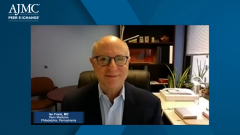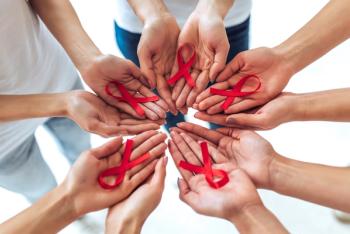
Overview of HIV Prevention with PrEP
A multidisciplinary panel of experts provides an overview of the economic burden of HIV and the role of pre-exposure prophylaxis (PrEP) in preventing HIV transmission.
Episodes in this series

Neil Minkoff, MD: Hello, and welcome to the American Journal of Managed Care® program entitled, “Pre-Exposure Prophylaxis: PrEP for HIV—Improving Access and Uptake.” I’m Dr. Neil Minkoff, the chief medical officer for Coeus HealthCare and Consulting Group. Joining me today in our discussion and our virtual panel are these colleagues: Dr. Ryan Bitton, the senior director of pharmacy services for the Health Plan of Nevada, which is a United Healthcare company; Jeffrey Crowley, distinguished scholar and program director of infectious disease initiatives at the O’Neill Institute for National and Global Health Law at Georgetown Law; Dr. Ian Frank, the associate chief of infectious disease at Penn Medicine; and Carl Schmid, the executive director of the HIV and Hepatitis Policy Institute. Today, our panel of experts are going to explore the landscape of HIV prevention with PrEP as well as discuss overcoming the barriers to its use. Let’s try to jump right into it, shall we? I think it would be helpful for the people who are tuning in and trying to join us for this panel to have an understanding of the value of PrEP, of HIV prevention strategy. Why are patients getting it and why aren’t they getting it are some of the things we need to get into. We can start with defining the problem in terms of the underlying economic burden of HIV, and the transmission of HIV. Mr Crowley, could I get you to lead off on that?
Jeffrey Crowley, MPH: Thank you, Dr. Minkoff, it’s a pleasure to join you today. In thinking about the economic burden, I would say that the Centers for Disease Control [and Prevention], or CDC, estimates that the lifetime cost of medical care for a single person who becomes diagnosed with HIV is $485,000. When they did their estimates, they looked at the impact of their programs for preventing HIV infection from 2007 to 2016. It was about in the middle of this period that PrEP became available, but looking at the range of tools we have to prevent infections, from condoms to diagnosing people, getting them into care, all the things, they believe that our nation’s prevention efforts have averted about 35,000 infections each year, about 350,000 in total over that period. By those estimates, this saves about $16 billion a year in direct medical costs, or about $170 billion over that period. Now, many people believe that we’ve been doing all of these things to prevent HIV, and we maximize them and then we’re at a plateau. Without PrEP, we probably couldn’t keep seeing the increases in prevention or more effective prevention. Thus, PrEP was really considered to be important because it could help keep us on this curve where we’re getting more effective every year at preventing new infections and saving in regard to the country’s health spending.
Carl Schmid, MBA: I would like to comment that we shouldn’t just be looking at the cost effectiveness of HIV treatment, you can also be looking at the public health impact of people living with HIV. It’s something. You have to be on treatment the rest of your life, every single day right now, so I think it’s important to look at the individual, the societal impact, and the public health impact as well.
Neil Minkoff, MD: That’s a really important point. I think some of us who were training and being involved in this in the earlier days of the HIV epidemic, and trying to understand the process, think of this as well beyond an economic burden. There’s the patient burden, family burden, societal burden, but we have to start somewhere. Thus, we’re starting with the economics because it is an important part of trying to understand this, but there is a cost-effectiveness approach too. It’s not just the cost of therapy. Is it cost effective the way, for example, dialysis or other preventive or chronic therapies are cost effective? Dr. Bitton, you could touch on that a little. I know you’ve spent some time working in that aspect of our field.Ryan Bitton, PharmD, MBA: Yes, thanks for the question. I agree with Carl. We don’t cover PrEP or discuss PrEP because it’s cost effective, it’s the right thing to do. But there has been some documentation looking at the savings and the cost effectiveness of using PrEP as an HIV prevention strategy. There are data out. There was an article in 2014…that looked at the number needed to treat to avoid a case of HIV, and associated costs with that. Specifically, there’s the simple math of the cost of what we save by avoiding HIV and the cost of PrEP, and there’s the cost of treating HIV with the antiretroviral medications, as well as the other comorbidities and the things that come with that. I think it’s been proven that it’s cost effective, it makes sense. With the numbers needed to treat, we’re as low as 30. Treating 30 people with PrEP can avoid 1 HIV transmission. That’s a fairly good number needed to treat, and that approach does come with savings.
Transcript edited for clarity.
Newsletter
Stay ahead of policy, cost, and value—subscribe to AJMC for expert insights at the intersection of clinical care and health economics.













































